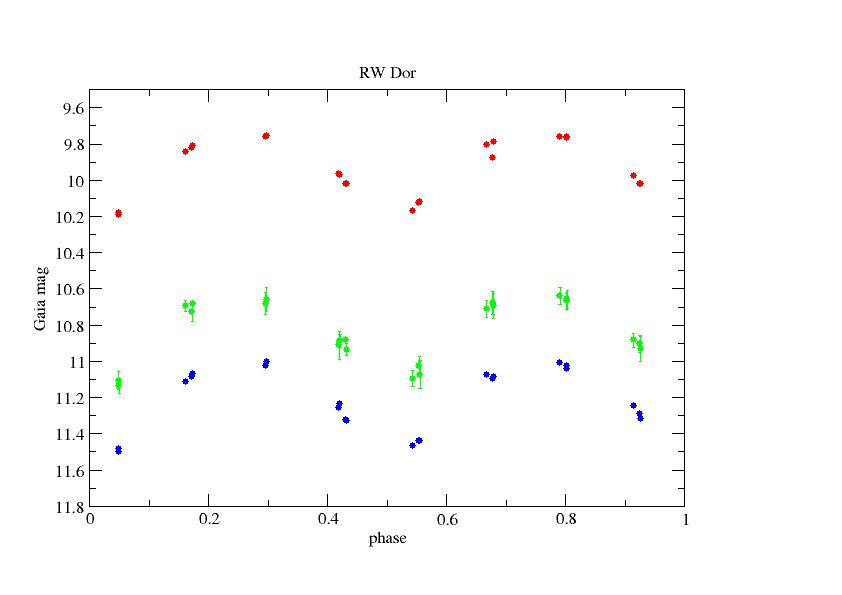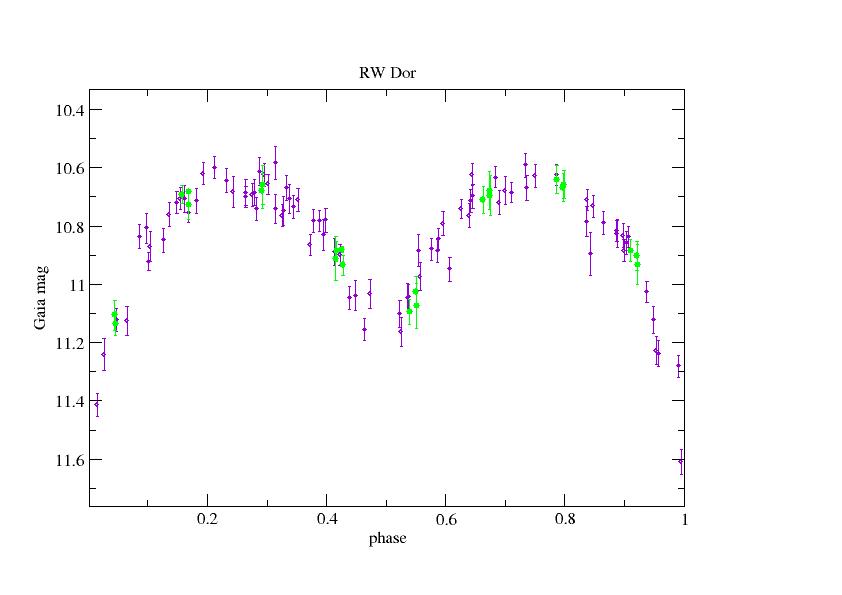|
This is the example of RW Dor, discovered as a variable star by H. Leavitt in 1908. Further observations and analysis of its brightness variation with time showed that it is actually a pair of stars that eclipse each other every 0.285 days. The two solar-type stars are in contact and RW Dor is classified as an eclipsing binary of W UMa type. RW Dor is located at 94 pc (29 light-years) as determined by the Hipparcos mission, being a foreground star in the direction of the Large Magellanic Cloud.
The observations were acquired during the commissioning phase in the so-called Ecliptic Pole Scanning Law. They consist of 23 observations during 3.5 days. The plot shows the phase-folded intensity variations as measured in the Gaia astrometric field (green), and in its blue and red spectrometers (blue and red symbols, respectively).
The plotted Gaia magnitude in the astrometric field is the average of nine CCD observations, while the magnitudes of the BP and RP spectrometers correspond to only one CCD observation. The error of each measurement is of order 1-2 mmag. The green error bars are the standard deviation of the nine measurements in the astrometric field. The data is uncalibrated. Once flat-field corrections will be applied and the calibrated PSF will be used, the standard deviations will decrease.
|








































 Sign in
Sign in
 Science & Technology
Science & Technology


